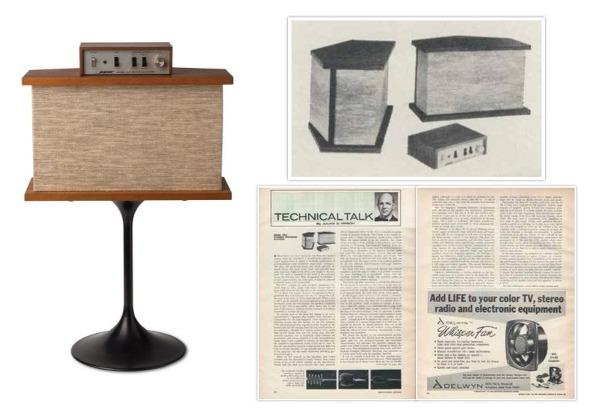Boy did I enjoy the succinct yet rich language of Mr. Hirsch review of the 901s.
I started reading Stereo Review in 1978, and was immediately hooked by Mr. Hirsch writing. He was totally believable.
For many of us, what Julian wrote was as from 'god's mouth to our ears'.
I was never a Bose fan. Klipschhorns were my holy grail forty years ago.
Thank you Rob for sharing the wisdom of past generations.

 There may be no singular product in modern audio history that has generated more accolades, derision, or pure controversy than the Bose 901 loudspeaker. Introduced in 1968 by a then four-year-old concern named after its MIT-educated founder, the 901 neither looked, nor sounded, like any speaker that had come before it. With its pentagonal cabinet that faced eight of its nine identical 4-inch, full-range drivers at the reflecting wall behind the speaker, its designer Amar Bose sought to have it mimic the way we hear in concert halls and imbue its sound with a giant soundstage and spatial realism that was unsurpassed.
There may be no singular product in modern audio history that has generated more accolades, derision, or pure controversy than the Bose 901 loudspeaker. Introduced in 1968 by a then four-year-old concern named after its MIT-educated founder, the 901 neither looked, nor sounded, like any speaker that had come before it. With its pentagonal cabinet that faced eight of its nine identical 4-inch, full-range drivers at the reflecting wall behind the speaker, its designer Amar Bose sought to have it mimic the way we hear in concert halls and imbue its sound with a giant soundstage and spatial realism that was unsurpassed.
 In the legend and mythology of the Bose 901, the review we’ve reprinted here, written by Julian Hirsch for HiFi Stereo Review’s September 1968 issue, looms large. It has been suggested by some observers that few factors beyond Bose’s own advertising contributed more to the speaker’s huge commercial success. While the review retained Hirsch’s usual dispassionate and professorial voice, it was certainly as close to a rave as he ever got. In 1998, when SR celebrated its 40th anniversary and Hirsch was asked to reflect on the most noteworthy products he’d encountered, he cited the 901 right alongside such classics as the original Shure V15 cartridge, the Marantz 10B tuner, and the Dynaco A-25 bookshelf speaker. Back in ’68, the 901 review appeared without fanfare and was mixed among the several featured each issue in Hirsch’s “Technical Talk” department, which always began with a brief essay (not reproduced here), followed up by a handful of product tests.
In the legend and mythology of the Bose 901, the review we’ve reprinted here, written by Julian Hirsch for HiFi Stereo Review’s September 1968 issue, looms large. It has been suggested by some observers that few factors beyond Bose’s own advertising contributed more to the speaker’s huge commercial success. While the review retained Hirsch’s usual dispassionate and professorial voice, it was certainly as close to a rave as he ever got. In 1998, when SR celebrated its 40th anniversary and Hirsch was asked to reflect on the most noteworthy products he’d encountered, he cited the 901 right alongside such classics as the original Shure V15 cartridge, the Marantz 10B tuner, and the Dynaco A-25 bookshelf speaker. Back in ’68, the 901 review appeared without fanfare and was mixed among the several featured each issue in Hirsch’s “Technical Talk” department, which always began with a brief essay (not reproduced here), followed up by a handful of product tests.

 An intrinsic part of the Bose 901 system is an active (ten-transistor) equalizer that handles both channels; it compensates for the high-frequency losses inherent in the reflecting process and also flattens out the bass response. (The uncompensated bass response is down because of the natural bass roll-off resulting from the very small volume of the enclosure.) Housed in a walnut cabinet 2-13/16 inches high by 9-1/4 inches wide and 6-3/4 inches deep, this self-powered equalizer unit is connected either between the preamplifier and power amplifier or in the tape-monitoring signal path of the amplifier or receiver. In the latter case, the amplifier’s tape-monitor switch is left set to TAPE. So that the tape-monitor function would not be lost, Bose has built it into the equalizer. A tape recorder can be connected to the equalizer and the usual monitoring switching performed through it.
An intrinsic part of the Bose 901 system is an active (ten-transistor) equalizer that handles both channels; it compensates for the high-frequency losses inherent in the reflecting process and also flattens out the bass response. (The uncompensated bass response is down because of the natural bass roll-off resulting from the very small volume of the enclosure.) Housed in a walnut cabinet 2-13/16 inches high by 9-1/4 inches wide and 6-3/4 inches deep, this self-powered equalizer unit is connected either between the preamplifier and power amplifier or in the tape-monitoring signal path of the amplifier or receiver. In the latter case, the amplifier’s tape-monitor switch is left set to TAPE. So that the tape-monitor function would not be lost, Bose has built it into the equalizer. A tape recorder can be connected to the equalizer and the usual monitoring switching performed through it.





























































